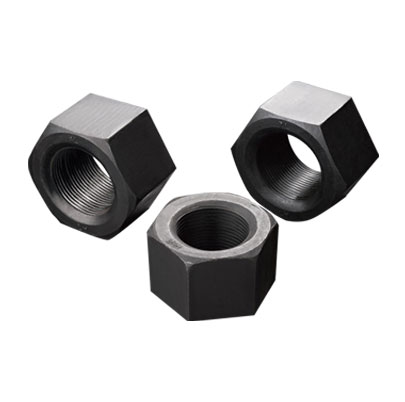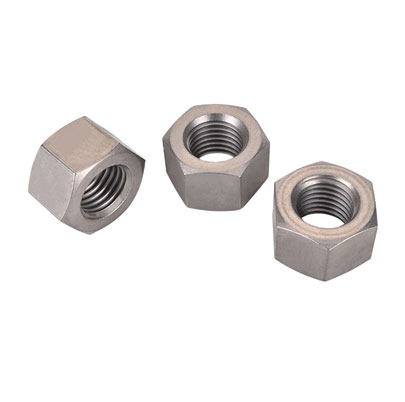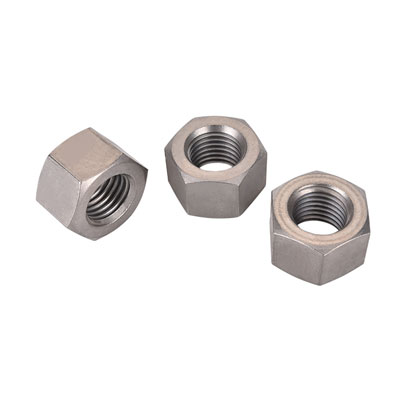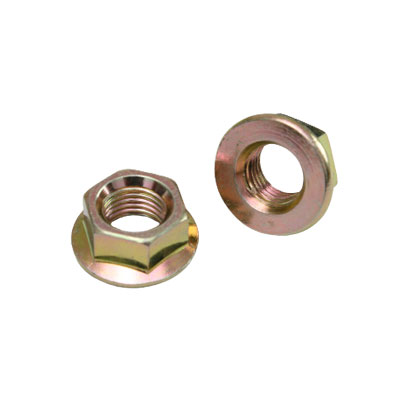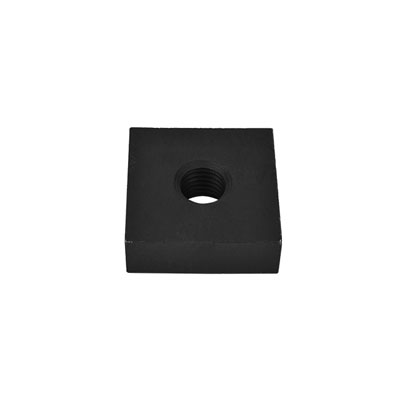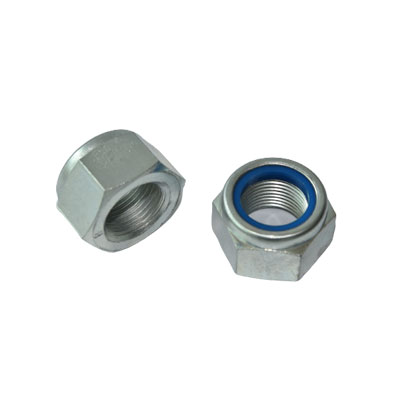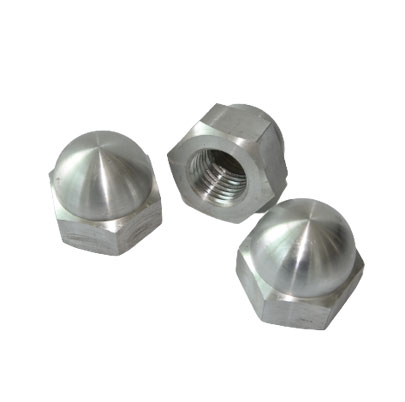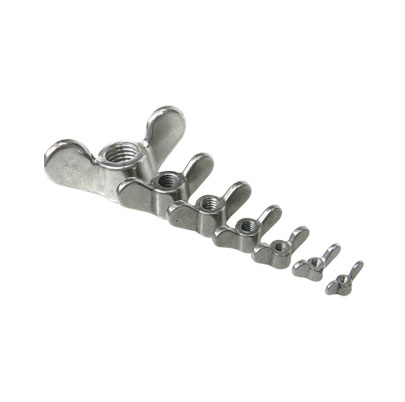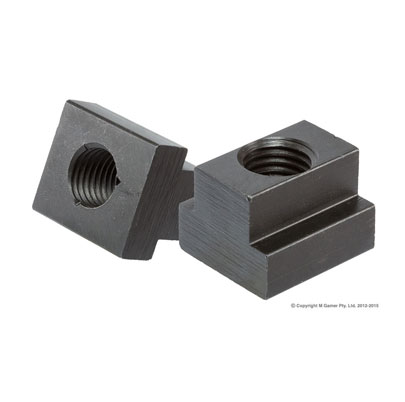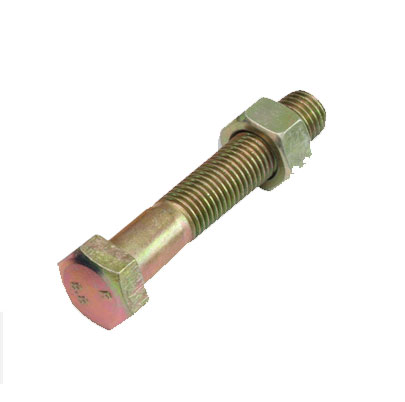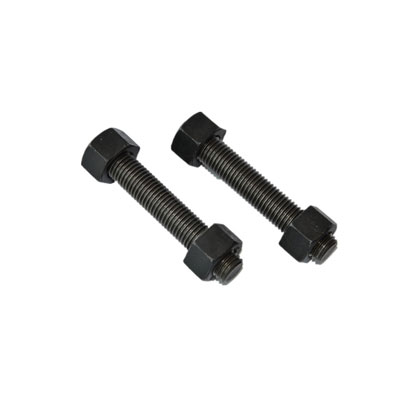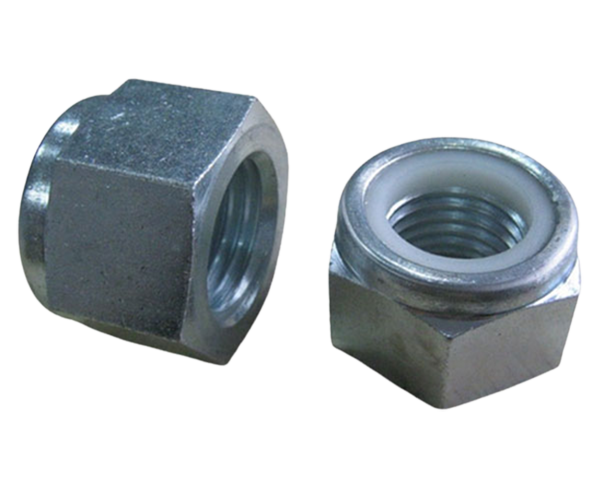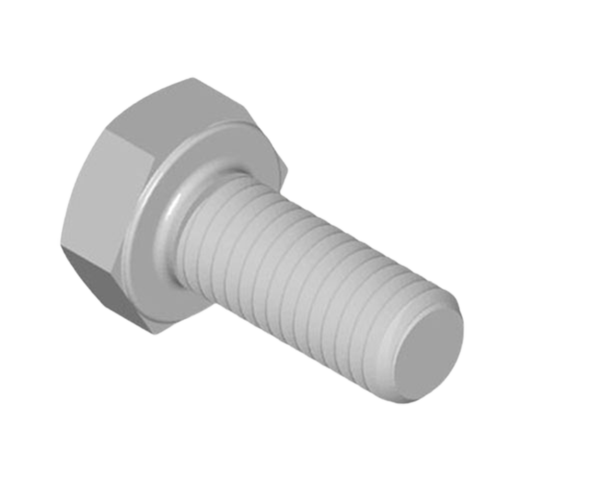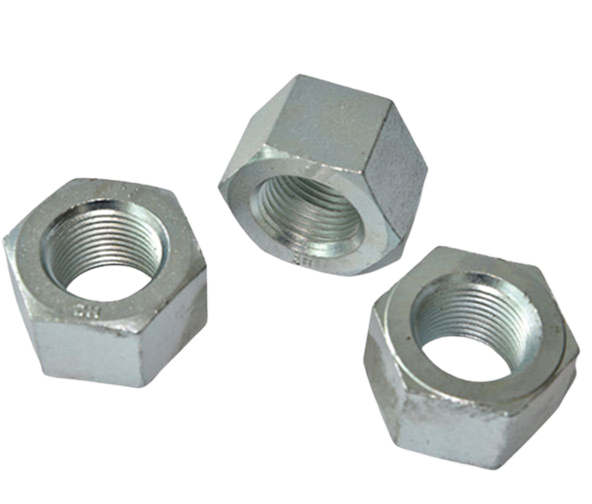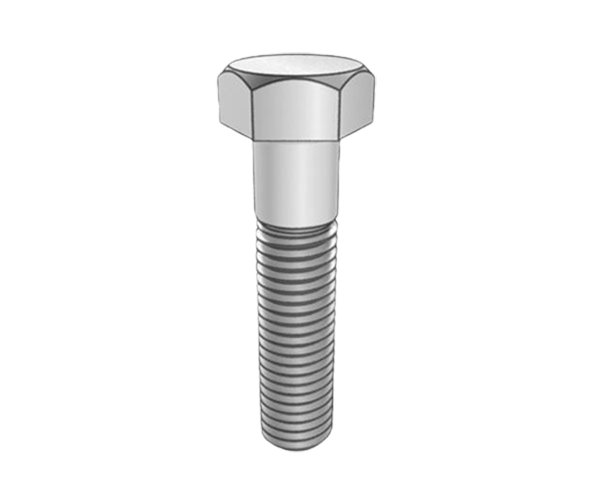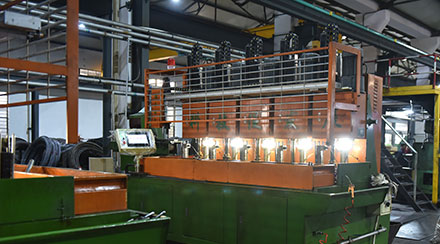The nut works on the principle of self-locking using the friction between the nut and the bolt. However, the reliability of this self-locking is reduced during dynamic loads. In some important cases we will take some anti-loosening measures to ensure the reliability of the locking nut. Let's find out more about locking nuts!
The principle structure of the nut are relatively simple, first of all, this nut is a pair of matching use, divided into concave nuts and convex nuts, installation, pay attention to the order, convex nuts in the bottom first, concave nuts in the top after installation. The convex nut is manufactured with eccentric processing, the concave nut is normal central round processing, when the two convex and concave nuts are screwed together, it is like inserting a wedge in the nut, thus achieving the effect of anti-loosening. It fundamentally solves the existing nut anti-loosening existing problems such as insufficient protection strength, its structure is reasonably designed, has the advantages of easy disassembly, repeated use, reliable anti-loosening, not subject to any use conditions, etc., significantly improve its self-locking performance and service life.
1. the locking nut is one of the anti-loosening measures
The locking nut's anti-loosening effect mainly depends on the interaction force between the nut and the bolt's engagement thread. At present, there are many ways to improve the interaction between the engagement threads, such as the improvement of the thread structure of Jinyuan nuts, nylon nuts of nylon increase brown, surface treatment of the threads, etc..
2. the locking nut has the following functions
(1) The first is to use two of the same nut screwed on the same bolt, between the two nuts to attach a tightening torque, making the bolt connection reliable.
(2) The second type is a special lock nut, which needs to be used together with a kind of shim that can prevent loosening. The special lock nut is not a hexagonal nut, but a round nut with 3/4/6 or 8 notches on the circumference of the nut (depending on the size of the nut and the manufacturer's product range), these notches are both the tightening point of the tightening tool and the snap-in place of the locking spacer.
(3) The third type is a threaded hole drilled through the outer surface of the nut to the inner threaded surface (usually 2, with a 90 distribution on the outer surface), which is used to screw in small diameter countersunk head screws, with the aim of applying a centripetal force to the threads to prevent the locking nut from loosening. The better quality locknuts currently on the market have a small brass block on the inner circular surface of the nut in line with the thread of the locknut, which is used to avoid damage to the latter by direct contact between the radial top tightening screw and the locked thread. These locknuts are gradually being used in the locking of shaft ends of rotating moving parts, such as the locking of bearings at the mounting end of ball screws.
 English
English
